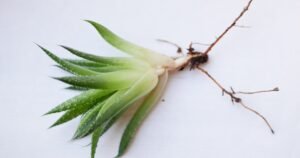Plant That Feels Like Velvet? The African Violet, scientifically known as Saintpaulia, is a popular houseplant known for its soft, velvety leaves. Anthurium Clarinervium, a stunning velvety plant, showcases heart-shaped leaves endowed with a plush texture. The leaves are predominantly dark green, with hints of light green on the undersides. This Anthurium variety, like others, traces its origins to Southern Mexico.
Native to Tanzania and southeastern Kenya, this plant is famous for its strikingly beautiful flowers that come in a range of colors from white and pink to blue and violet. Its leaves, however, are equally captivating.
Covered in fine hairs, they possess a unique, velvety texture pleasing to the touch. Apart from their aesthetic appeal, these fuzzy leaves also have a functional role in nature, helping the plant retain moisture in its native tropical habitat.
Introduction
Plants with velvety texture provide a unique sensory experience due to their soft and lush surfaces. These plants are often sought after for their tactile appeal and aesthetic charm.
In this article, we will explore various plants that exhibit a velvety texture, understand the reasons behind this characteristic, and delve into the features that make them particularly appealing to plant enthusiasts and nature lovers.

The Velvet Texture: Nature’s Soft Touch
Plant That Feels Like Velvet? The velvet texture in plants refers to a soft, plush, and downy surface resembling the feel of velvet fabric.
This texture results from specific adaptations and structures on the plant’s leaves, stems, or flowers.
Plants with a velvety surface often have tiny, soft hairs or trichomes that contribute to this delightful tactile sensation.
The Role of Trichomes in Creating a Velvet Texture
Trichomes are minute outgrowths or appendages on plants that give them a fuzzy or velvety texture.
They are often visible to the naked eye and can range in density and length, depending on the species.
These structures serve multiple functions, including protection against environmental stresses such as excessive sunlight, insect predation, and temperature extremes.
Trichomes also play an important role in the plant’s water retention capacity, a crucial feature for plants native to arid or tropical environments.
Their ability to trap and retain moisture reduces water loss, ensuring the plant’s survival in harsh conditions.
In addition to their functional roles, the soft and tactile features of trichomes add to the aesthetic appeal of these plants, making them a favorite among plant enthusiasts for their unique charm and character.

Plants Exhibiting a Velvet Texture
1. Stachys byzantina (Lamb’s Ear):
Lamb’s Ear is one of the most iconic velvet-textured plants, which features silvery-gray leaves covered in dense, fine hairs that give it a soft and plush appearance.
Touching the leaves often evokes the sensation of touching a plush toy.
2. Tradescantia sillamontana (Cobweb Spiderwort):
Cobweb Spiderwort is known for its hairy leaves that resemble a cobweb, giving it a velvety appearance.
The fine hairs on the leaves create a soft, textured surface, providing a delightful touch experience.
3. Calceolaria (Lady’s Purse or Slipper Flower):
Calceolaria plants are often characterized by their unique slipper-shaped flowers with a velvety texture.
The softness of the petals contributes to their appeal, making them a favorite among gardeners and flower enthusiasts.
4. Senecio crassissimus (Vertical Leaf Senecio):
The vertical leaves of this succulent plant have a velvety texture, giving them a luxurious feel.
The softness of the leaves adds to the overall allure of this plant.
5. Gynura aurantiaca (Purple Passion Vine):
Purple Passion Vine’s purple furry leaves have a velvety texture, making them a visually striking and touch-worthy addition to any plant collection.
Factors Contributing to the Velvet Texture
1. Trichomes:
Trichomes are specialized hair-like structures found on the surface of leaves, stems, and other parts of the plant.
These trichomes can be glandular or non-glandular and play a crucial role in creating a velvety texture by providing a soft, fuzzy covering.
2. Microscopic Structure:
The microscopic structure of the plant’s surface, including the shape and density of cells, also contributes to the velvet-like texture.
Cells arranged specifically can give a downy appearance, enhancing their softness.
3. Adaptations for Protection:
The velvety texture can serve as a protective adaptation for the plant, deterring herbivores and reducing water loss by creating a layer that traps moisture.

The Allure of Velvet Plants
1. Aesthetic Appeal:
The soft and plush appearance of velvet plants enhances their visual appeal, adding a luxurious and elegant touch to any garden or indoor space.
2. Sensory Experience:
Touching these plants’ velvety leaves or petals provides a unique sensory experience akin to touching a delicate fabric.
It appeals to the sense of touch and elevates the overall experience of interacting with plants.
3. Contrast in Gardens:
Velvet-textured plants often stand out in gardens due to their distinct texture compared to other plants’ typical smooth or glossy leaves.
This contrast adds visual interest and diversity to the garden.
4. Therapeutic and Calming:
The soft and comforting touch of velvet plants can be soothing, promoting relaxation and a sense of tranquility when interacting with them.
Cultivating and Caring for Velvet Plants
1. Light:
Most velvet plants thrive in bright, indirect light. Providing adequate light is essential to maintain their vibrant appearance and velvety texture.
2. Watering:
Velvet plants generally prefer moderate watering. It’s important not to overwater as this can lead to root rot. Allow the soil to dry slightly between waterings.
3. Humidity:
Some velvet-textured plants, especially tropical varieties, appreciate higher humidity levels. Misting or placing a humidifier nearby can be beneficial.
4. Pruning:
Regular pruning helps maintain the shape and overall health of the plant. Remove dead or damaged leaves to encourage new growth.
5. Feeding:
Velvet plants appreciate a balanced, slow-release fertilizer during their growing season. Regular feeding, typically every 4-6 weeks, can promote robust growth and maintain the lush texture of the leaves. Follow the fertilizer instructions to avoid overfeeding, which could harm the plant.
Conclusion
Plant That Feels Like Velvet? Velvet plants testify to nature’s ability to create visually stunning and tactually delightful creations. The velvety texture found in these plants, often attributed to trichomes and unique microscopic structures, adds a touch of luxury and softness to any garden or indoor space. Beyond their aesthetic appeal, the sensory experience of touching their plush leaves or petals makes them truly special in the botanical world. Incorporating velvet plants into your plant collection can bring visual and tactile joy, enhancing your connection with nature.
FAQs
What plant leaves feel like velvet?
Lamb’s Ear is a plant famous for its leaves that feel like velvet. The leaves of this plant are densely covered with fine, soft hairs, giving them a plush, velvety texture. Other plants with velvety leaves include African Violets, Purple Passion Vine, and Velvet Plant, all providing a surreal tactile experience.
What plant looks like velvet?
The Purple Passion Vine (Gynura aurantiaca) often appears as if it’s covered in velvet due to its fuzzy purple leaves. Another plant, the Velvet Calathea, gets its name from its striking leaves painted with a rich, velvety color. These plants bring a unique, tactile element to any plant collection.
What is the name of the velvet plant?
The Velvet Plant is scientifically known as Gynura aurantiaca. It’s a houseplant prized for its bright purple, velvety leaves. Originating from Southeast Asia, it’s a part of the sunflower family. Growing a Velvet Plant indoors can offer an appealing textural element and a splash of color to your home decor. Care for this plant involves balancing bright indirect light and careful watering.












